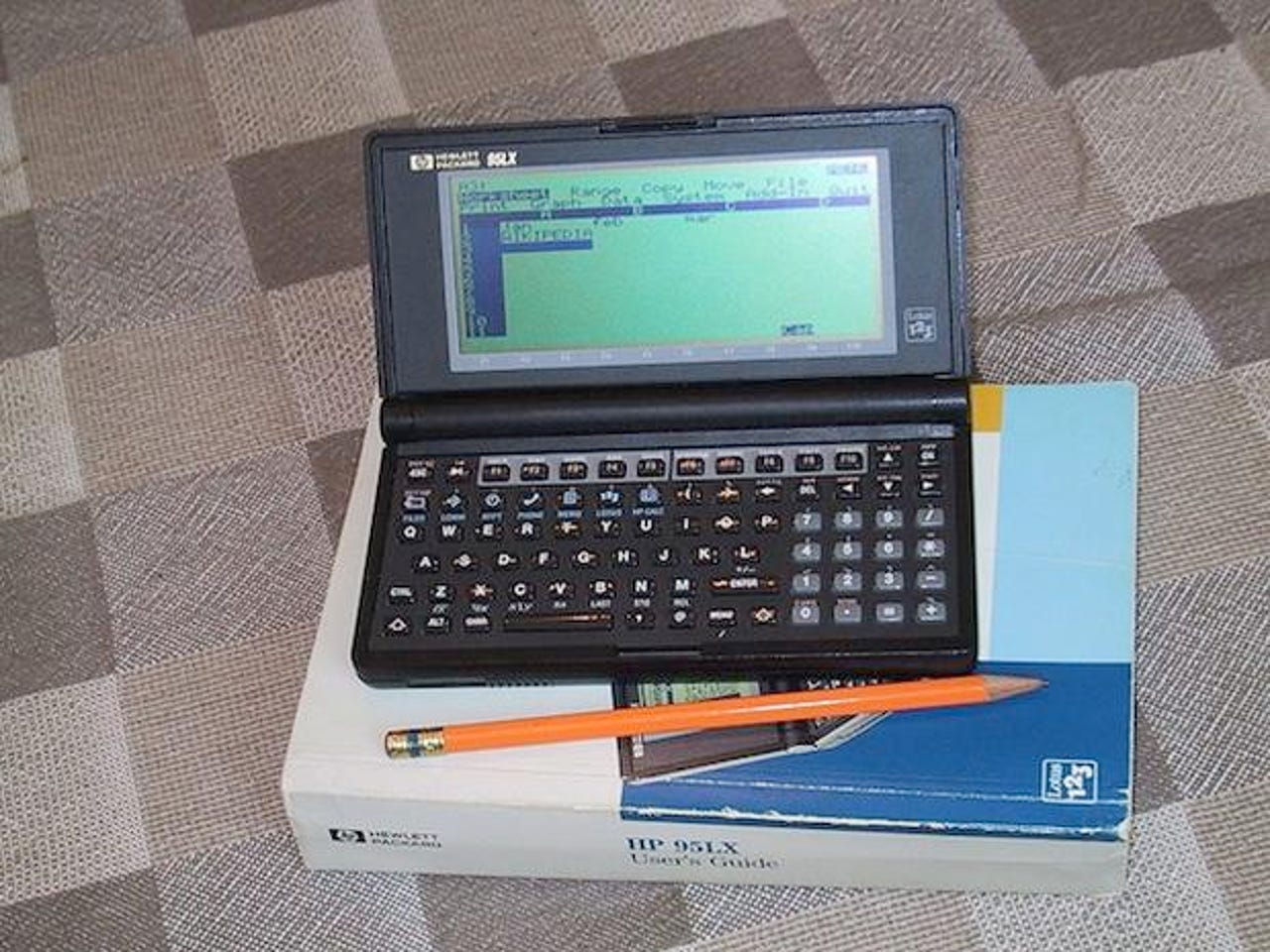HP 95LX: Remembering the early mobile DOS PC


Microsoft was pushing MS-DOS, its clone of the IBM software used on IBM PCs. Bill Gates and his team were busy making deals with companies willing to give a shot at breaking the monopoly on PCs that IBM enjoyed.
Few employees had IBM PCs on their desk, those who worked with the corporate mainframe used a thin client of some kind. These were from Wang or a few other companies, and consisted of small CRT monitors displaying green or amber characters on the little screen. All computing happened on the big hardware hidden away in the frostbite generating computer room.
One such deal Microsoft forged early on was with Hewlett-Packard, and it had a significant impact on my work as a seismic imaging geophysicist at the time. It also helped launch the mobile PC space, long before it was called that.
The HP 95LX was one of the first true mobile PCs as it ran MS-DOS from Microsoft. It would fit in a pocket (6.3 x 3.4 x 1 inches) yet was almost as powerful as those clunky desktop PCs of the time.
The first version of the HP had a whopping 512K of system RAM, 1MB of ROM, and storage on a removable serial card. The HP 95LX ran for a month on two AA batteries, and both the computer and the memory card had coin backup batteries to protect memory contents.
HP not only fit a thumb keyboard on that small form, it had a dedicated numeric keypad. It displayed ASCII characters on the small grayish screen, not unlike IBM PCs. Graphics may have been a dream of PC engineers at the time, but it would be a while before displaying anything on a computer screen other than characters would be a reality.
There wasn't much software stored in the ROM, but it was critical for my work. In addition to MS-DOS 3.22, it shipped with the big spreadsheet of the time -- Lotus 1-2-3. There was also a simple text editor, a financial calculator, a contacts app, and a calendar program. Perhaps most importantly the HP 95LX had a file manager, critical for running DOS.
The HP 95LX revolutionized my work. That work consisted of my solving complex equations based on geophysical principles, dozens of times each day. The solutions of those many equations became parameters for massive programs that ran on the company mainframe computer. One incorrect parameter would waste days of expensive run time that would only be discovered at the end of the process.
Featured
Prior to buying the HP 95LX, these calculations were done manually on a calculator, and then programmable models once available. It was tedious, and errors still occurred as tiny calculator screens made QCing the equation entries difficult.
The "large" display of the HP changed that; it was easy to check data entry. The manual entry was reduced to a few variables, further reducing the potential for errors. It profoundly changed my work, and in a very good way.
I programmed my equations with complicated Lotus 1-2-3 spreadsheets. The task was simplified by entering variables into entry boxes at the top of the spreadsheets, which then plugged them into big formulas in the body of the worksheet.
This fueled my fledgling passion for mobile technology. It made me realize how big an impact mobile devices could play in both our work and our lives. What HP accomplished with the HP 95LX showed me that a lot of utility can be crammed in a very small form. It demonstrated that even in these early days of big PCs, with good engineering things could be shrunk to fit the pocket.
A later version of this device from HP introduced me to the utility of Windows CE. This launched my obsession with handheld PDAs, eventually leading me to the Palm Pilot.
As Microsoft celebrates its 40th anniversary, it is appropriate to recognize how the relationship with HP helped the company gain traction in the early days of mobile. With the progression from MS-DOS on the HP 95LX through Windows, the young firm in Redmond got a solid start.
The impact on my passion for mobile ignited by the HP 95LX was later matched by Sony. Its UX-50 fired my love for both handheld Windows PCs and for Tablet PCs. That's a story for another time.